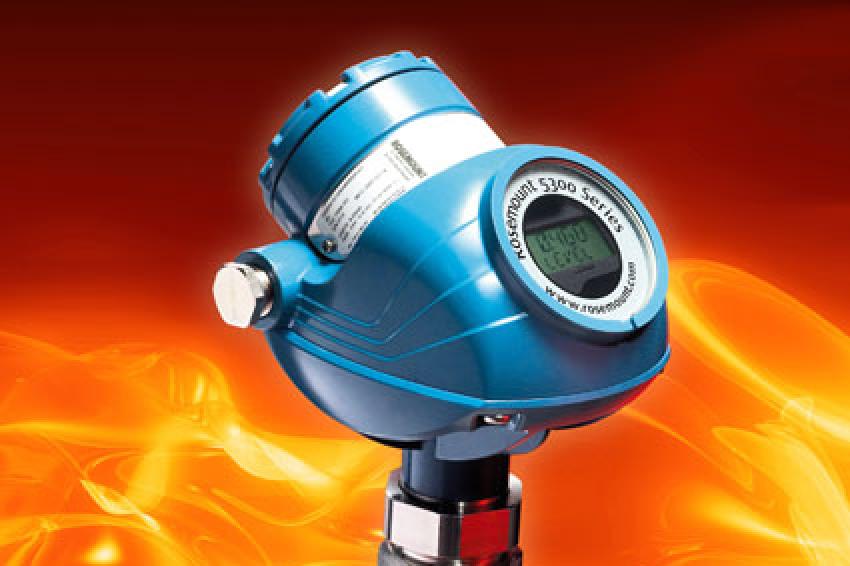New Options for Emerson’s Rosemount 5300 GWR
Emerson Process Management announces enhancements to the single probe offering of Rosemount 5300 Series Guided Wave Radar (GWR), extending its use into even more applications.
The new options include a thicker rod for longer measurement lengths and a Hastelloy C-276 probe and wetted parts for applications in corrosive, hot and high pressure environments.
The Rosemount 5300 Series features Emerson's patented Direct Switch Technology (DST) which makes it possible to use a single lead probe in more challenging applications. Combining the single lead probe with DST provides an accurate, reliable level measurement on low dielectric media and long measuring ranges, even for viscous media. The single lead probe offers benefits over the coaxial or twin lead probes traditionally used for these applications, since the design is not susceptible to coating problems when used with viscous media.
The new, thicker 13mm probe is designed for an extended measurement range and is available in stainless steel for standard operating temperatures and pressures. The new Hastelloy C-276 probe and wetted parts option make the transmitter ideal for use in corrosive, hot and high pressure environments. This enables the transmitter to be applied to oil and gas applications, including those where NACE (sulphide stress corrosion) materials are a requirement. C-276 alloy is also suitable for seawater duty and other fluids with a high chloride content. Application examples in the chemical industry include reactors, and solutions containing caustic and sulphuric acid.
The Rosemount 5300 Series is ideal for the measurement of challenging level and interface measurements on liquids, slurries and solids. Its probe-guided radar signal, combined with innovative engineering, makes the 5300 virtually unaffected by process conditions and it has almost no installation restrictions.
The range includes co-axial, twin lead, single lead and flexible type probes to cover a wide range of applications. For installations with low dielectrics and long measuring ranges, and where the media is highly viscous, thick or dirty, the single lead probe would normally be the preferred choice over coaxial and twin probes. This is because the coaxial and twin probe can be susceptible to product build between the inner and outer leads of the probe. Heavy coating or contamination can reduce the measuring range and may cause erroneous level readings, as well as increase the need for maintenance. The single probe has only one lead and is therefore not so susceptible to product build-up, however, signal strength can be an issue with a single lead design.
Emerson's patented Direct Switch Technology (DST) provides a signal to the transmitter which is two to five times stronger than traditional GWR solutions. This gives a better signal to noise ratio, improved operation in low dielectric media, including over longer measuring ranges, and a better margin to handle disturbing factors. These include objects close to the probe, coating, foam, vapour or turbulence. This means that the single lead probe design can manage most applications including interface applications.





